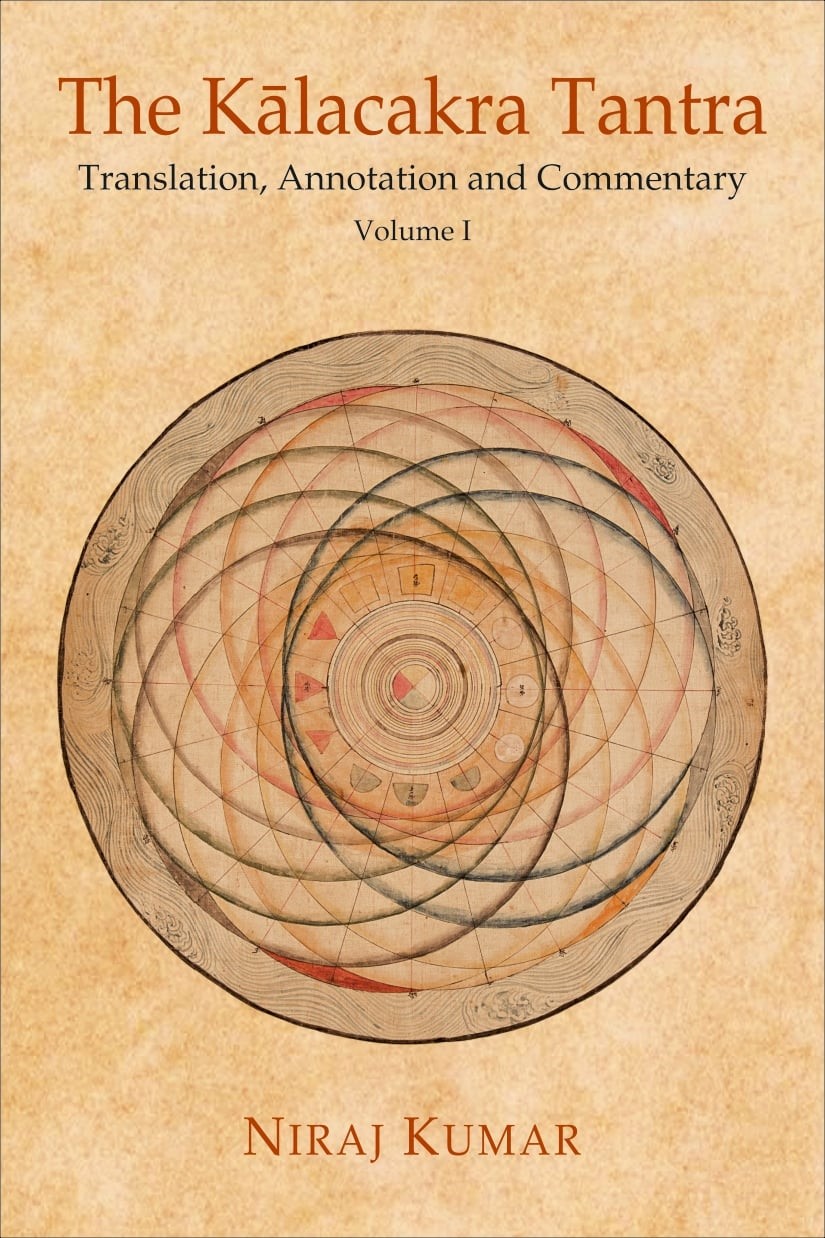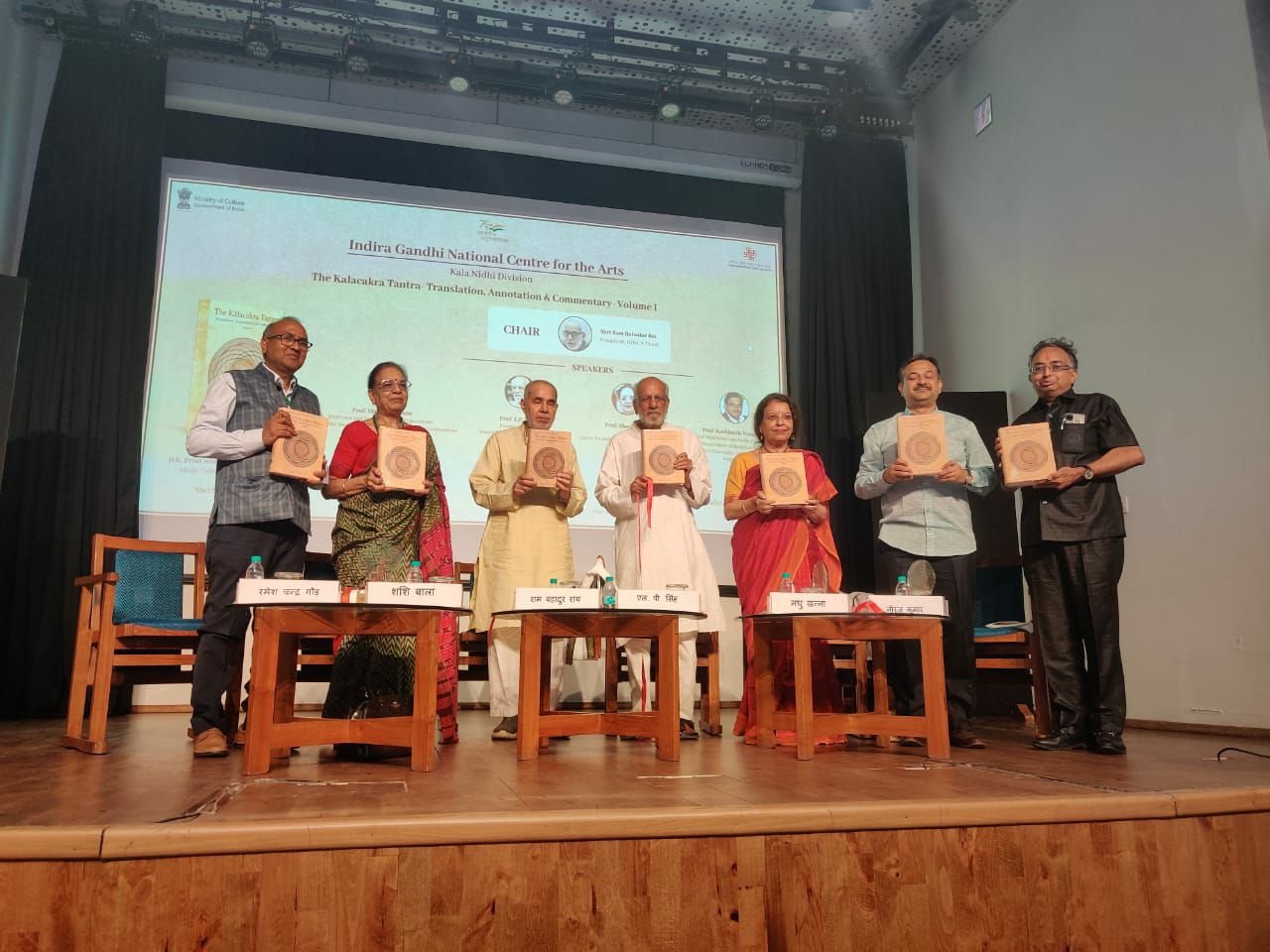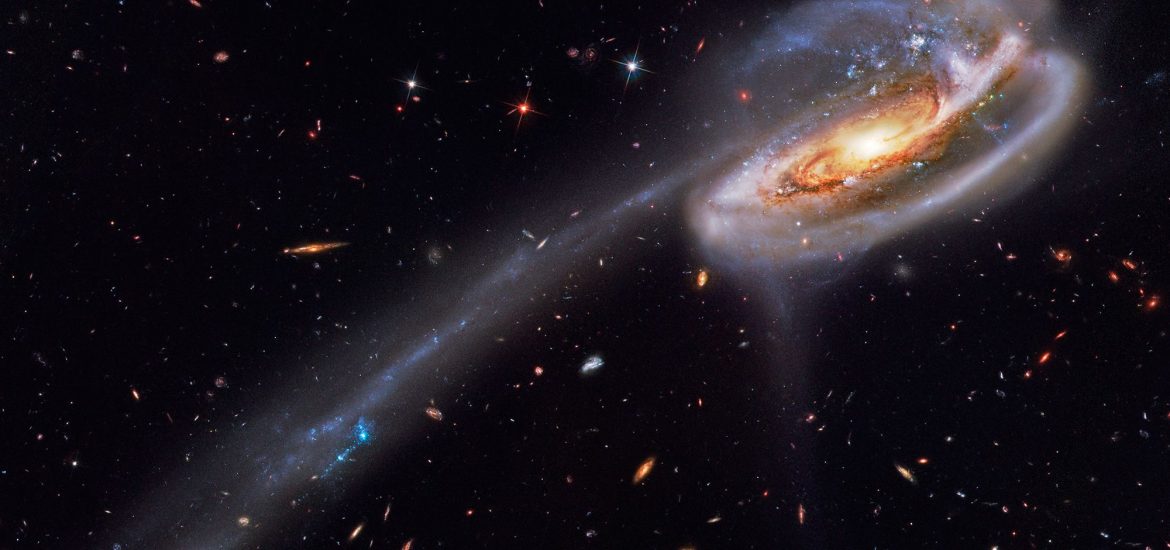The Kalachakra Tantra is a unique text. While it has been associated with the mystical land of Shambhala, and famously promulgated by His Holiness the 14th Dalai Lama in the West, there have been few that have picked up the task of not only translating the text, but also annotating and commenting on it. Spiritualist and writer Niraj Kumar, who is based in Delhi, has taken on this task and published his take on The Kalachakra Tantra: Translation, Annotation and Commentary, Volume I (D.K. Printworld and Mody University, 2022). There is only one other commentary on first chapter of the Kalachakra Tantra which has survived until now, which is the Sanskrit commentary of Vimalprabha Tika of the 11-12th century.Mr. Kumar received initiation from Swami Ranganathananda-ji Maharaj of the Ramakrishna Mission in 1992 and has published books and journal articles of diverse interest, including Indic belief. In this respect, his methodology in approaching this considerable feat is framed through a synthetic approach to knowledge. As he writes in his introduction, “After proper understanding, the focus of the KCT is on realization of the ultimate emptiness of all phenomena-inner and outer as well as all the analytical categories. The practise of Sadanga Yoga- retreat (pratyahara); contemplation (dhyana); breath control (pranayama); fixation (dharana); remembering (anusmrti); and enlightenment (samadhi) – leads to the ultimate realization through gradual stages.”

His methodology also deploys many graphics, tables, and mathematical calculations in the astronomy section and the Chakravala section. Mr. Kumar built his translation on, while also attempting to move past, his predecessors in John Newman, Edward Henning, Yukio Ohashi, James Hartzell, and Nicholas Roerich. Nevertheless, the authorship, region of composition, and exact time period of the Kalachakra Tantra are still not known for certain. Mr. Kumar states in his introduction that he has tried to draw conclusions based on astronomical data and internal hints to find out the answers to these persistent issues.
At the Indira Gandhi National Centre for the Arts, Mr. Kumar was guest speaker at his book launch evening, with several other Indian scholars. Together, they discussed the issues surrounding Shambhala, Shangri-La, and Vajrayana Buddhism and its syncretic nature with Hindu ideas. The discussion was moderated by Prof. RC Gaur, director of the National School of Drama and chaired by Rambahadur Rai Sahib, president of the IGNCA Trust, with Prof L.P. Singh, Prof. Shashibala and Prof. Madhu Khanna as fellow speakers. His translation of the first chapter has been welcomed by many in the academic community. They, and Mr. Kumar himself, believe that the time is due for a Kalachakra Tantra translation project to come from within India itself, which is seen as the birthplace of Buddhism and the intellectual world from which the Kalachakra Tantra emerged.

Mr. Kumar takes on the ambitious undertaking of trying to locate Uddiyana, the homeland of Padmasambhava. He goes against the conventional wisdom that this place is in the Swat Valley of Pakistan, and instead posits Java in modern-day Indonesia as the historical location of Uddiyana. He therefore is in a position to attempt deconstruction of the hagiography of Padmasambhava, a key figure of Uddiyana that arrived in Tibet to transmit Vajrayana in the time of imperial ruler Trisong Detsen (d. 797). Instead, Mr. Kumar suggests that Padmasambhava may have been actually a Javan – perhaps connected with the local Javan aristocracy – who travelled to Tibet as one of Java’s prominent spiritual ambassadors.
This claim, among many others (such as Shambhala being located in Arakan) in Mr. Kumar’s comprehensive book, stands apart from the transmissions given by teachers from the Vajrayana tradition, but it provides a new and fresh perspective that scholars should consider as the Buddhist Studies world continues to grapple with the enduring historical and textual mysteries of the Kalachakra Tantra. There is certainly no reason why a reorientation of theories about this paradoxically renowned yet unfathomably mysterious tantra cannot inject fresh, bold ideas about how this scripture came to be transmitted the way it was, and decipher the code within the text along non-traditional criteria. The Kalachakra Tantra will continue to be taught as a staple Vajrayana text for advanced initiates, but its heritage remains part of the Eurasian cultural complex, and as such can be analyzed beyond orthodox Buddhist borders, at least among the more scholarly among us.


